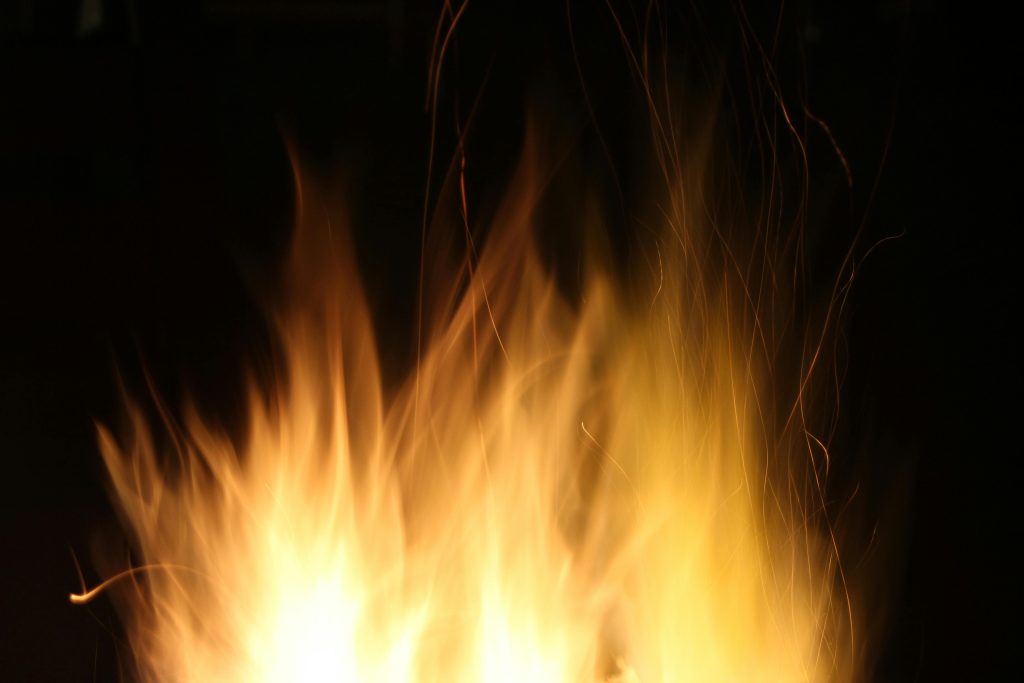Enthalpy change is an important concept in chemistry, particularly in thermodynamics. It refers to the change in heat content of a chemical reaction or physical change. Calculating enthalpy change allows chemists to predict spontaneity and determine reaction direction. In this post, we will go over what enthalpy change is, the different types, and how to calculate it using standard reaction conditions and experimental data.
What is Enthalpy Change?
Enthalpy change, denoted by ΔH, represents the quantity of heat absorbed or released during a chemical reaction or physical change that occurs at constant pressure. It is a state function, meaning its value depends only on the initial and final states of the system, not the pathway between them.
The standard enthalpy change of reaction (ΔH°rxn) is the enthalpy change when 1 mole of reactants is converted to products under standard state conditions of 1 M concentrations, 1 atm pressure, and usually 25°C. A positive ΔH° indicates the reaction is endothermic (absorbs heat) while a negative ΔH° means the reaction is exothermic (releases heat).

Types of Enthalpy Change
There are a few common types of enthalpy change we can calculate:
Standard enthalpy of formation (ΔHf°) – The enthalpy change when 1 mole of a compound is formed from its constituent elements in their standard states.
Standard enthalpy of combustion (ΔHc°) – The enthalpy change when 1 mole of a substance is combusted/burned in oxygen under standard conditions, usually to form carbon dioxide and water.
Standard enthalpy of reaction (ΔH°rxn) – The enthalpy change for a balanced chemical reaction under standard state conditions.
Enthalpy of solution – The enthalpy change when 1 mole of a substance dissolves in a solvent under defined conditions.
Enthalpy of vaporization – The enthalpy change required to vaporize 1 mole of a liquid under standard pressure to form an ideal gas.
How to Calculate Enthalpy Changes
There are two main ways to calculate enthalpy changes – using standard enthalpy of formation/combustion values from tables or performing calorimetry experiments.
Using Standard Enthalpy Values
Standard enthalpy of formation (ΔHf°) and combustion (ΔHc°) values for many common elements and compounds are available in reference tables. To calculate the standard enthalpy change of a reaction (ΔH°rxn), we use Hess’s Law which states the enthalpy change of a reaction is equal to the sum of the enthalpy changes of all individual steps.
For example, to calculate the ΔH°rxn for the reaction:
C3H8(g) + 5O2(g) → 3CO2(g) + 4H2O(l)
- Write the balanced chemical equation
- Look up the standard enthalpies of formation (ΔHf°) of all reactants and products
- Use Hess’s Law:
ΔH°rxn = ΣΔHf°(products) – ΣΔHf°(reactants)
Plugging in the values gives: -2205.2 kJ
So this reaction is strongly exothermic under standard conditions.
Using Calorimetry Experiments
Calorimetry can be used to directly measure the enthalpy change of a reaction. In solution calorimetry, the temperature change of a reaction mixture is monitored as heat is absorbed or released.
The key equation is:
q = mcΔT
Where:
- q is the heat absorbed or released by the calorimeter (J)
- m is the mass of the calorimeter contents (g)
- c is the specific heat capacity of the calorimeter contents (J/g°C)
- ΔT is the temperature change of the calorimeter (°C)
To calculate the enthalpy change per mole of reaction (ΔHrxnm), we divide the total heat by the number of moles of reaction.
For example, if reacting 0.5 mol of NaOH and HCl in an insulated calorimeter caused a 2.5°C rise in 75g of solution, the calculation would be:
- Mass of calorimeter = 75g
- Specific heat of solution = 4.184 J/g°C
- Temperature change = 2.5°C
- Moles of reaction = 0.5 mol
q = mcΔT
q = 75g x 4.184 J/g°C x 2.5°C = 763.25 J
ΔHrxn = q/moles of reaction
= 763.25 J / 0.5 mol
= 1526.5 J/mol
So calorimetry directly measures the enthalpy change under the actual experimental conditions.
Sign Convention for Calculating Enthalpy Change
It’s important to understand and follow the sign convention when calculating enthalpy changes:
ΔH is negative for exothermic reactions that release heat to the surroundings.
ΔH is positive for endothermic reactions that absorb heat from the surroundings.
This may seem counterintuitive at first, but stick to this convention to ensure enthalpy change calculations balance properly.

Standard Enthalpy Change of Formation (ΔHf°)
Standard enthalpy change of formation (ΔHf°) refers to the enthalpy change that occurs when 1 mole of a pure substance is formed from its elemental constituents under standard state conditions (1 bar pressure, 25°C, all substances in their most stable form).
These values are provided in data books and can be used to calculate enthalpy changes using the following relationship:
ΔHreaction = ΣΔHf°(products) – ΣΔHf°(reactants)
This allows us to estimate the enthalpy change of a reaction using only the ΔHf° values of the reactants and products.
Sample Enthalpy Change Calculation
Let’s calculate the enthalpy change for the reaction:
CH4(g) + 2O2(g) → CO2(g) + 2H2O(l)
Given:
ΔHf°(CH4) = -74.9 kJ/mol
ΔHf°(O2) = 0 kJ/mol
ΔHf°(CO2) = -393.5 kJ/mol
ΔHf°(H2O) = -285.8 kJ/mol
ΔHreaction = ΣΔHf°(products) – ΣΔHf°(reactants)
= (-393.5) + 2(-285.8) – (-74.9) – 2(0)
= -802.2 kJ
This combustion reaction is exothermic as shown by the negative ΔH value.
Multi-Step Reaction Calculations
For step-wise reactions, calculate the enthalpy change (ΔH) for each step and sum them to find the overall ΔH:
CaCO3(s) → CaO(s) + CO2(g)
CaO(s) + H2O(l) → Ca(OH)2(s)
ΔHstep1 = 182 kJ
ΔHstep2 = -65.2 kJ
ΔHtotal = ΔHstep1 + ΔHstep2 = 182 + (-65.2) = 116.8 kJ
The overall reaction is endothermic as shown by the positive ΔHtotal.
Factors that Affect Accuracy
While standard enthalpy change values provide estimates, the actual enthalpy change can vary due to:
Temperature: ΔH is temperature dependent but standard values assume 25°C.
Pressure: ΔH may depend on pressure but standard values assume 1 bar.
State: Standard states may differ from states in question.
Uncertainties in published ΔHf° values.
Reaction mechanism and intermediates not captured.
So experimental calorimetry is needed for more accurate ΔH measurements under non-standard conditions. Understanding these limitations is important.
Conclusion
In summary, following the sign convention and using standard enthalpy values allows A-Level students to estimate enthalpy changes for reactions. With practice, enthalpy change calculations will become a core competency for exam success.
Interested in achieving your best possible results for A-Levels? Bright Culture offers the best A-Level Chemistry tuition in Singapore. Our experienced tutors have a proven track record of helping students maximize their exam performance. Contact Bright Culture today to find out how our proven tuition techniques can boost your Chemistry grade.



